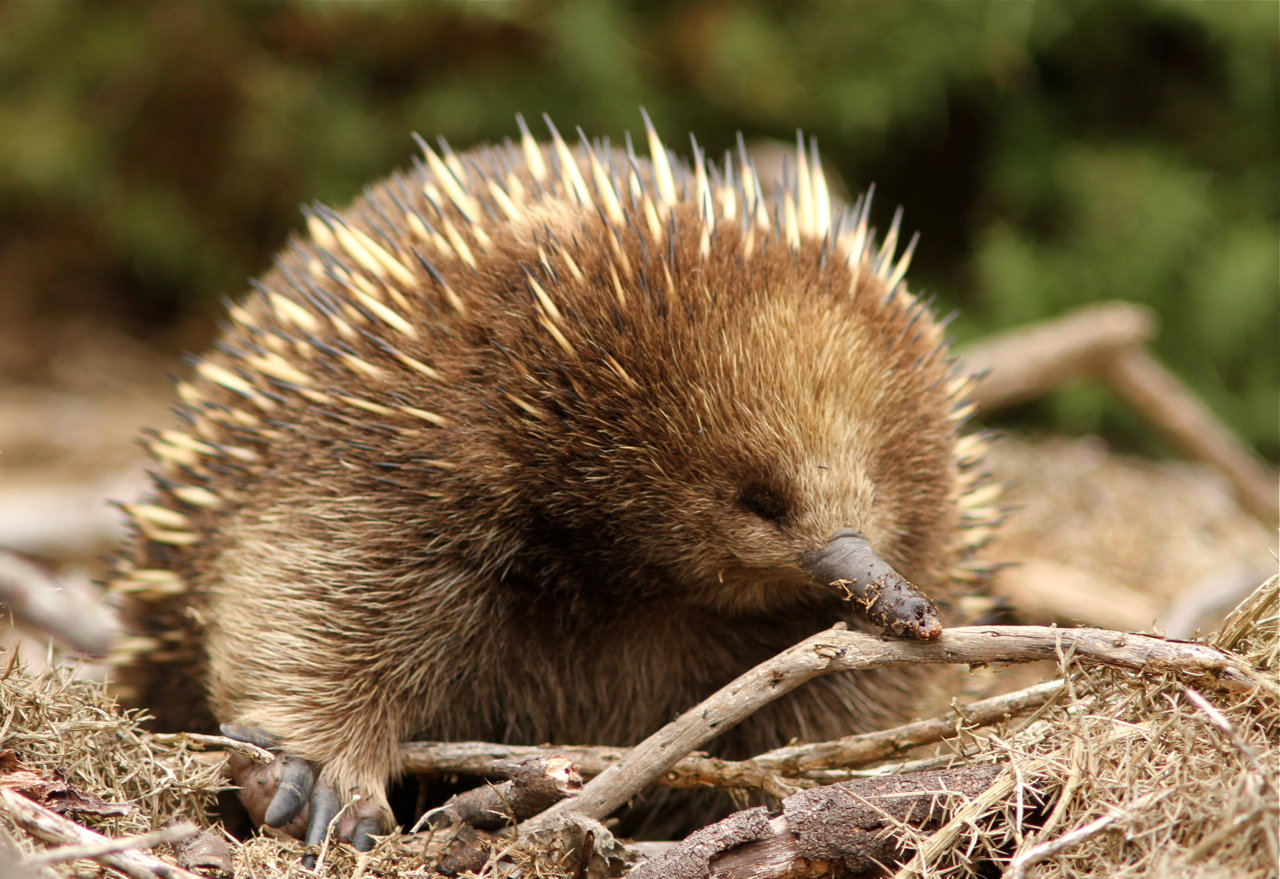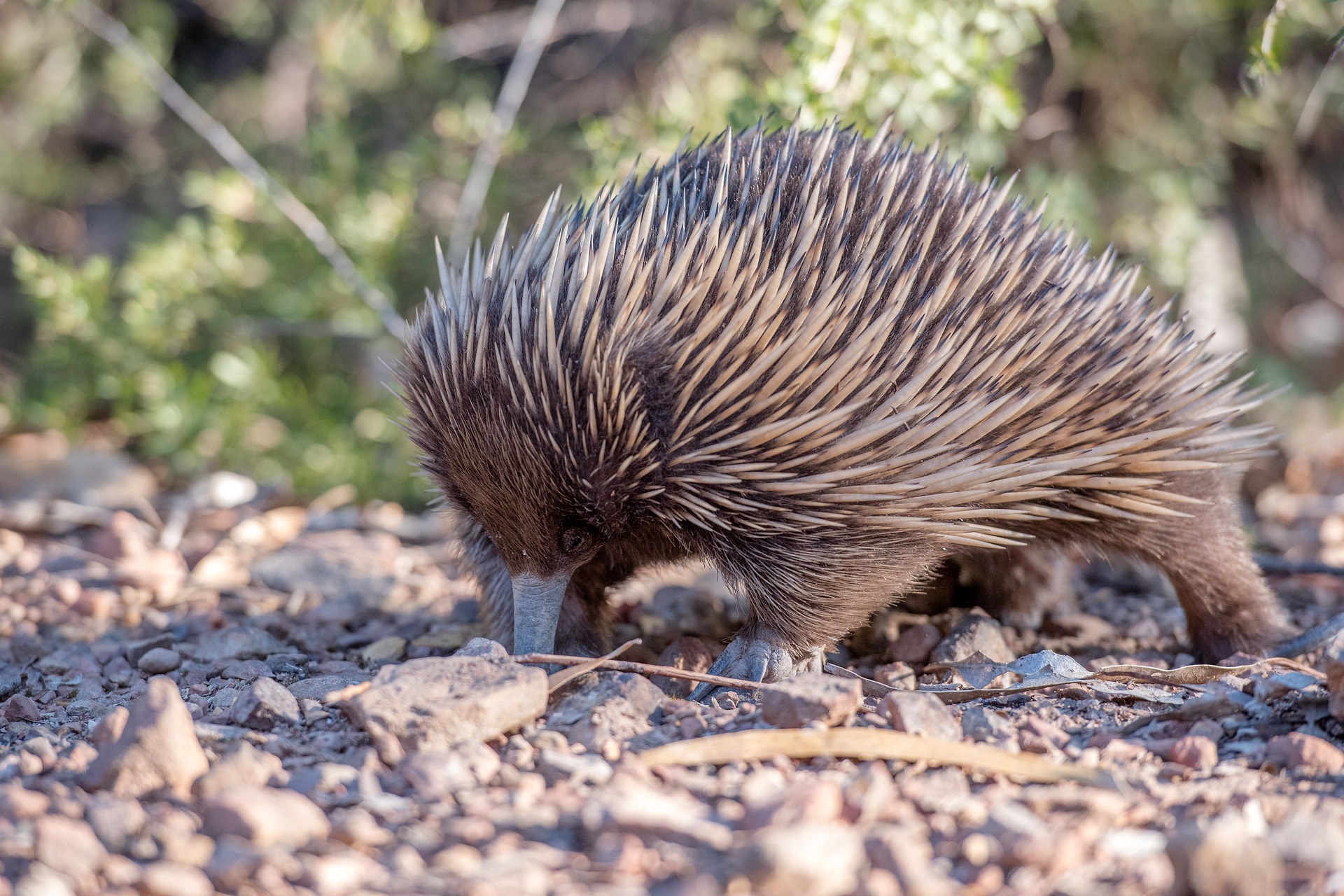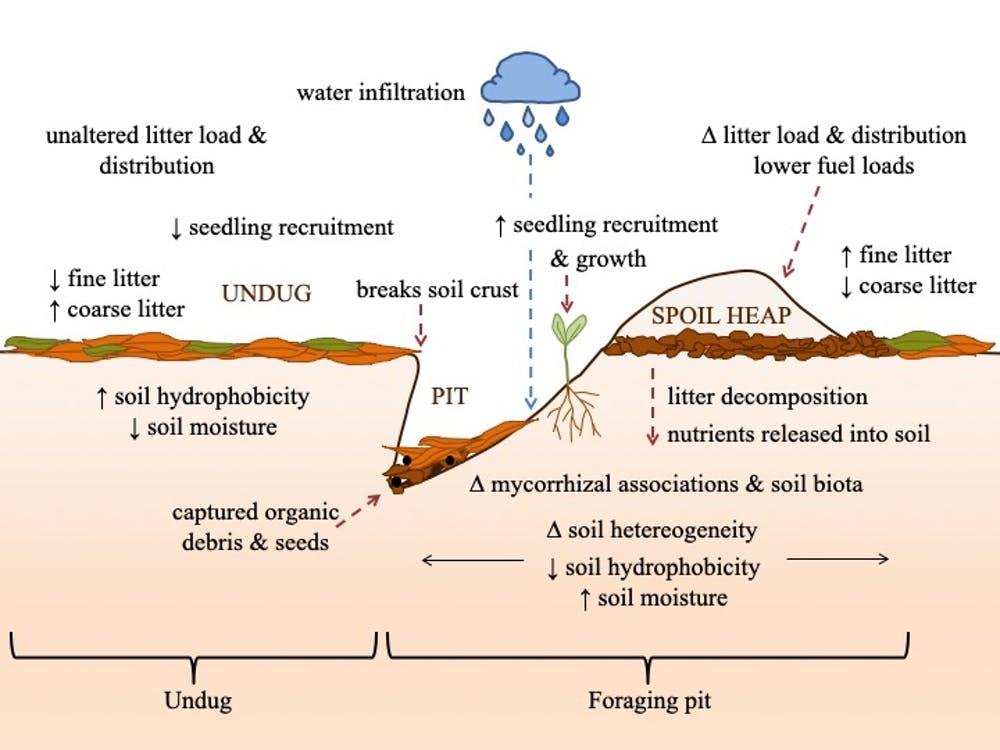In late winter and early spring, Wombat Forest residents may notice an increase in echidna diggings, as on warm north-facing areas the virgin queens of Meat Ants
Iridomyrmex are closer to the surface. These queen ants are a rich source of fats, and most welcome for echidnas coming
out of the lean winter months.
Short-beaked Echidnas Tachyglossus aculeatus are well known for eating ants and termites – but they are not strictly myrmecophagous. A truly myrmecophagous
mammal, such as anteaters or pangolins, has over 90% of their diet composed of ants and termites. As well as ants and termites, echidnas also prey upon moth and beetle larvae, and earthworms.
The Echidna CSI project asks citizen scientists to send in their echidna sightings from across Australia, via smartphone app of the same name. This data will build up a much better picture of their numbers and distribution. The project also asks echidna enthusiasts to send in any echidna scats for analysis, as the project research team are investigating the DNA and hormones within echidna scats; “DNA will indicate the echidna diet, population genetics and microbiome while hormones can show if echidnas are stressed in particular environments and help us better understand their reproduction”.
This kind of scientific detective work has already thrown up some surprising findings: recent DNA analysis of the echidna gut microbiome adds two other dietary items to the usual insect fare – fungi and even plants!
Foraging for food by digging is assisted by the echidna’s powerful musculature, long claws and their uniquely backward facing hind feet. Echidnas dig in soil, and also move surprisingly heavy rocks and logs to get to their tiny quarry. One study estimated that echidnas spend 12% of their time digging and had the potential to move 204m of soil per year. Our spiky little ecosystem engineer!
We have seen the importance of Superb Lyrebirds in moving large amounts of soil and leaf litter, and also well studied is the role of bandicoots. bandicoots and Illustration credit Here in the Wombat Forest our remaining ecosystem engineers are echidnas and of course wombats doing the digging – a vital action for ecosystem function.
The characteristic digging pits of echidnas (often with a little round snout-hole impression at the deepest point) create microclimates and diversity in the soilscape. A study in the arid and semi-arid areas replicated the size and shape of echidna diggings and found that these pits had greater rates of seed germination and leaf litter decomposition than in soil without diggings.
Echidnas are Australia’s most widespread mammal, from alpine areas to desert, even beach habitats. As long as there is food to eat, and sites to shelter in, the echidna can survive. They are absent from cleared farmland, upland rainforest, and the deepest fern gullies. This means that their distribution would be patchy through the Wombat Forest region. With a home range of 30-40 hectares on average one echidna can cover a wide variety of habitats and are often seen in people’s backyards.
Echidnas are surprisingly long-lived for such a small mammal – 30-40 years in the wild, and over 50 years recorded in captivity!
I have been living in the Wombat Forest for 20 years – and over that period we have seen the Millennium drought, the Black Saturday fires, the La Nina flooding event of
2010-2011, year after year of “planned burns” and most recently the severe windstorm that devastated patches of the forest with extensive tree fall
and uprooting, which Gayle wrote about in the last issue.
To some extent, echidnas can handle droughts and the associated lack of food as they have a very low metabolic rate, in fact the lowest of all mammals. This low energy requirement means that echidnas can survive lean periods, and their habit of going into a kind of hibernation called torpor also helps conserve resources.

A very fluffy and furry echidna from Tasmania. https://commons.wikimedia.org/wiki/User:JKMelville
The echidna anti-predator strategy is to use those powerful muscles and backward facing hind feet to dig directly down into the soil – and this same movement is used to surprising effectiveness to swim when the need arises – such as during heat waves or floods.
Their anti-predator hiding strategy is also used in the case of wildfire or planned burns. The soil is an excellent protector, but if the echidna does not dig down deep enough the
spines can be burnt. The spines are made of keratin, just like hair, and can be burnt down to a stub.
Individual survival chances of echidna in fires are pretty good – but what is more worrying are the changes that occur as a result of the burns – mainly the destruction of fallen
logs and other shelter sites that are so essential to echidnas. And like all animals post-fire, their survival beyond the fire event relies upon a plentiful supply of food. If the planned
burn area is too large then this means that echidnas have to rely solely on burnt areas to find food. The microbiome of an echidna’s gut is very different depending upon whether the animal is foraging in burnt or unburnt habitat – but what is not clear is the long-term effects of fires on echidna health and survival.
I watched Echidna CSI researcher Tahlia Perry give a fantastic talk online – and when someone asked whether echidnas were factored into pre-burn surveys Tahlia replied
that they were not, but most probably should be! Each of our long-lived Wombat Forest echidnas deserves a long and healthy life, with a rich complex understory habitat, so they can continue providing those vital ecosystem functions as they dig for food – yet another reason to fine-tune our planned burn regime.
This article features in the September edition of Wombat Forestcare newsletter.


0 Comments